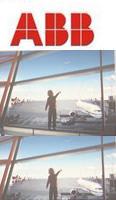關(guān)于我們
北京國(guó)威國(guó)潤(rùn)五金機(jī)電有限公司是華北地區(qū)領(lǐng)先的設(shè)備維護(hù)、修理和運(yùn)作(MRO)工業(yè)品分銷商����, 全面多樣的國(guó)內(nèi)外知名品牌工業(yè)產(chǎn)品確保最大程度滿足客戶的產(chǎn)品選擇需求, 憑借齊備的MRO全線產(chǎn)品�、充足的現(xiàn)貨儲(chǔ)備,國(guó)威國(guó)潤(rùn)將為廣大客戶提供專業(yè)的MRO采購(gòu)服務(wù)��,節(jié)省客戶的時(shí)間和成本����。 面對(duì)經(jīng)濟(jì)全球化的趨勢(shì),國(guó)威國(guó)潤(rùn)人將堅(jiān)持在“誠(chéng)信經(jīng)營(yíng)���、信譽(yù)第一”的服務(wù)綜旨��,以一應(yīng)俱全的產(chǎn)品���、規(guī)范化的管理、專業(yè)化的服務(wù)�����,致力打造成全國(guó)領(lǐng)先的一站式MRO工業(yè)品分銷商�。
更多 >>
企業(yè)文化
特大喜訊�����!我公司于2021年5月18日收到中國(guó)石化銷售股份有限公司組織的防爆產(chǎn)品采購(gòu)合同�,合同編號(hào):32850221-21-MY40XX 特大喜訊:我公司于2020年6月9日接到中國(guó)招標(biāo)有限責(zé)任公司編號(hào)為(2020)1172號(hào)的成交通知書�����, &n…
更多 >>
聯(lián)系我們
地 址:北京市海淀區(qū)學(xué)清路9號(hào)匯智大廈首層9-10號(hào)
電 話:010-82389888
傳 真:010-82388889
更多 >>
